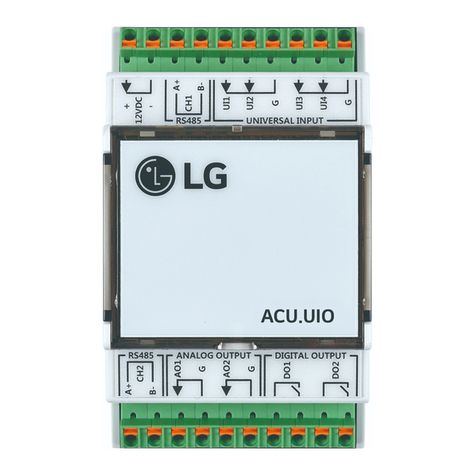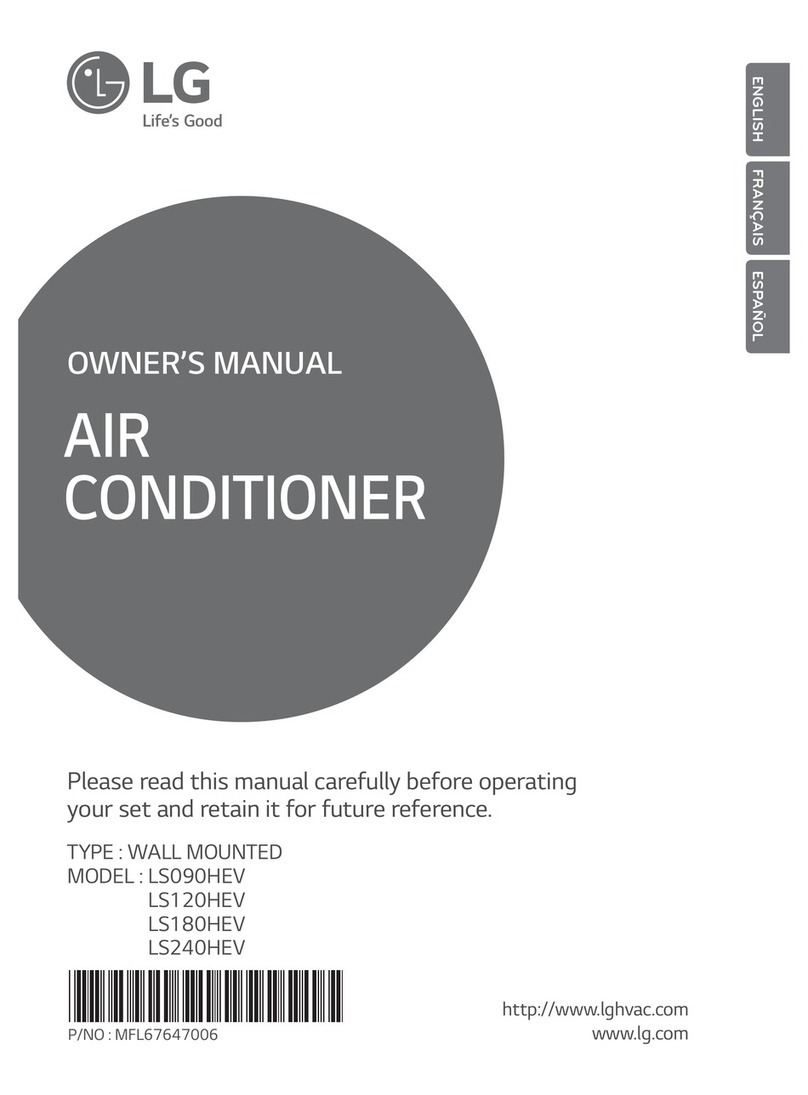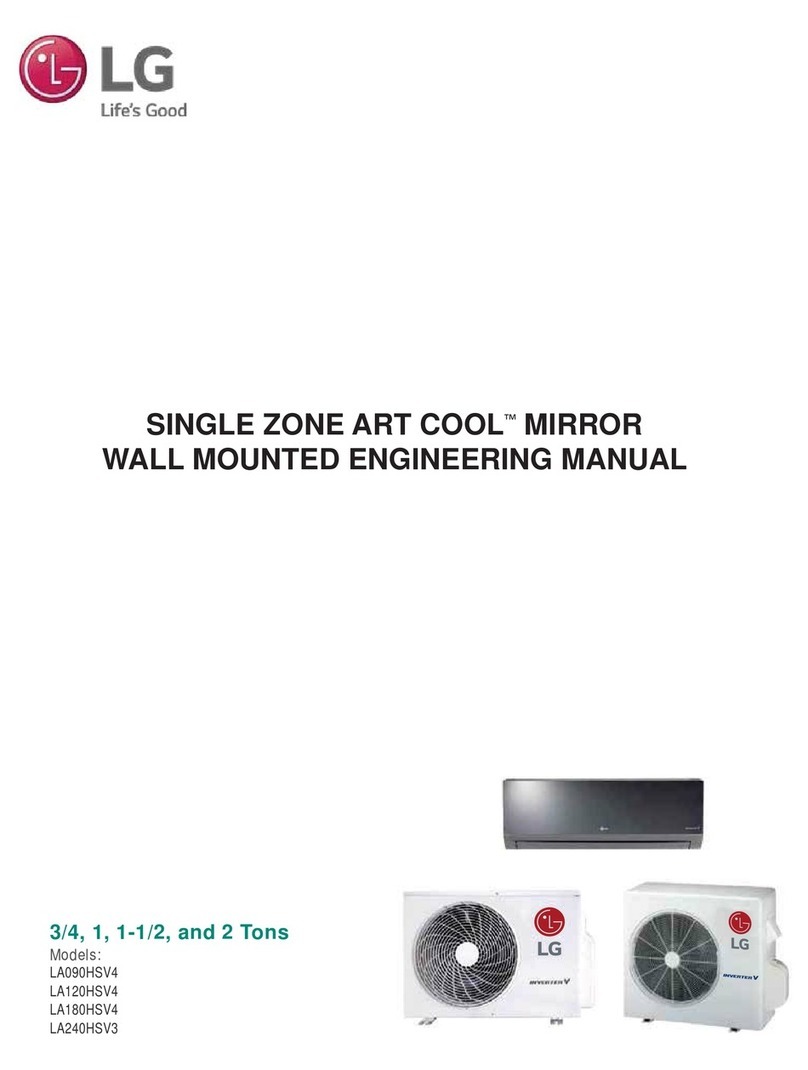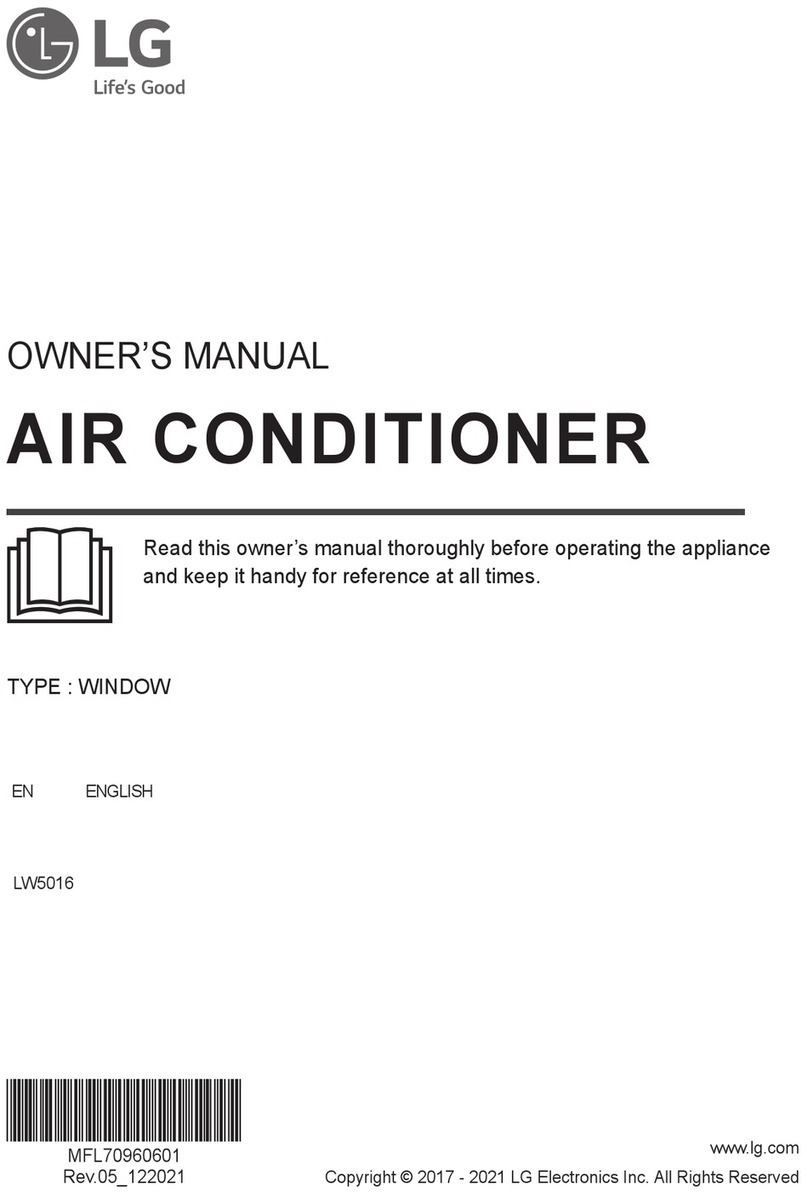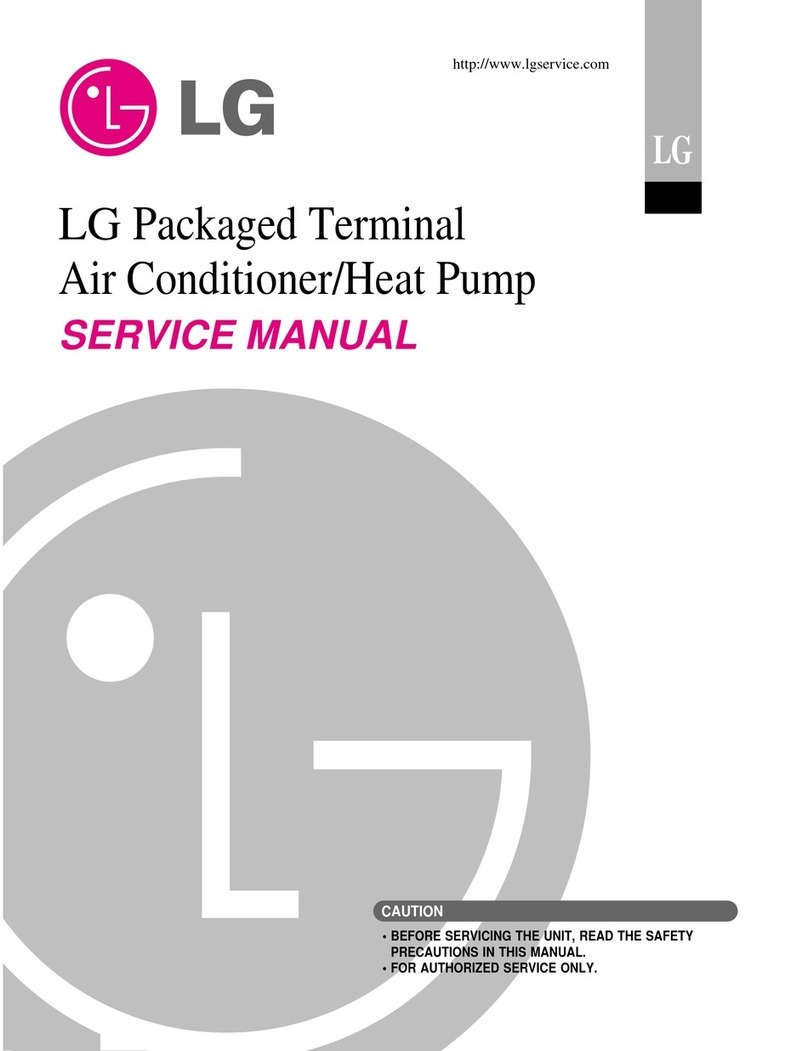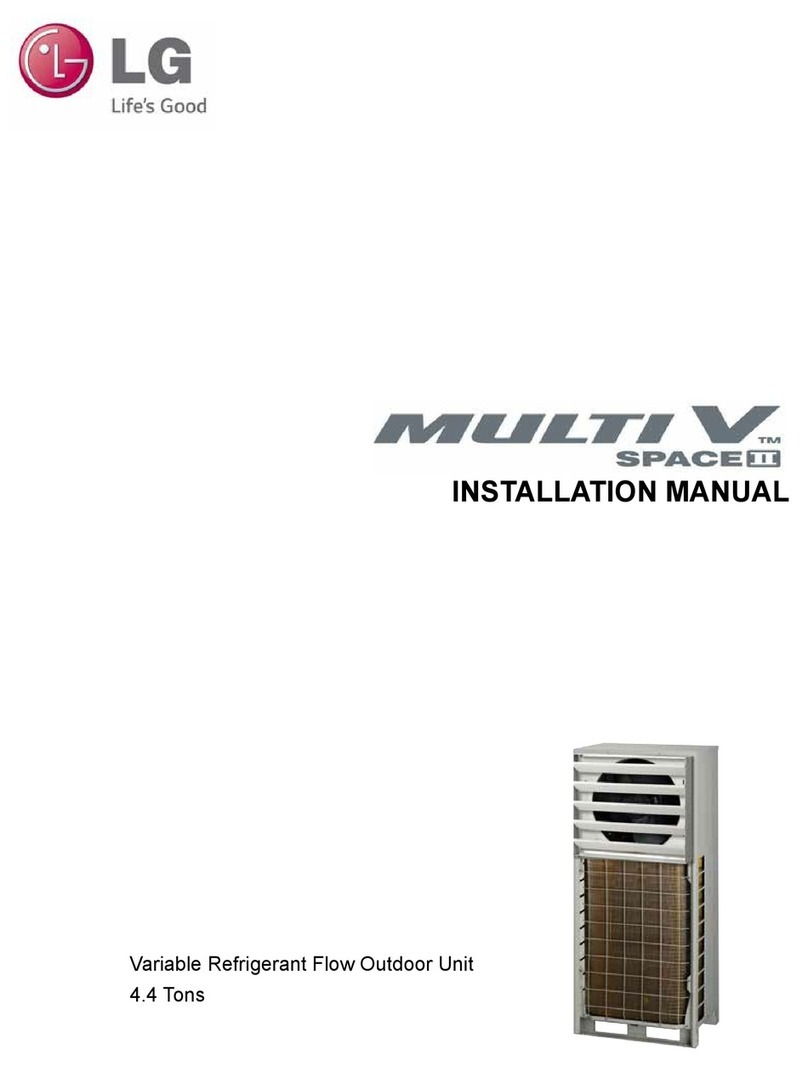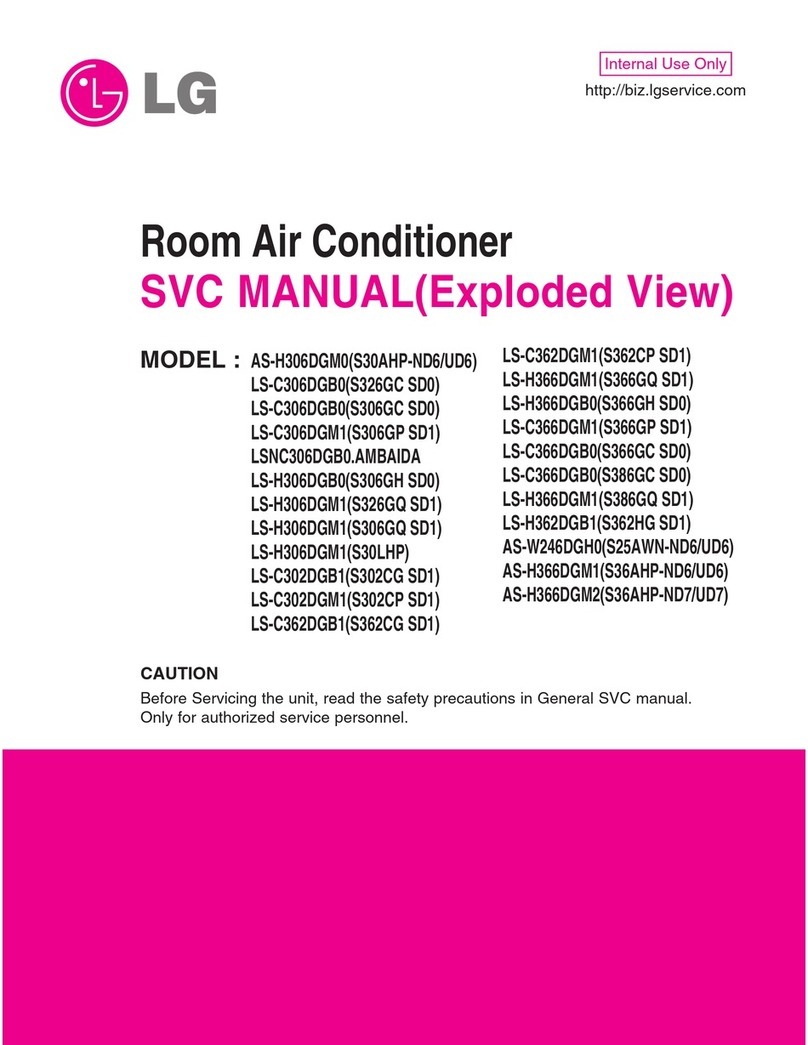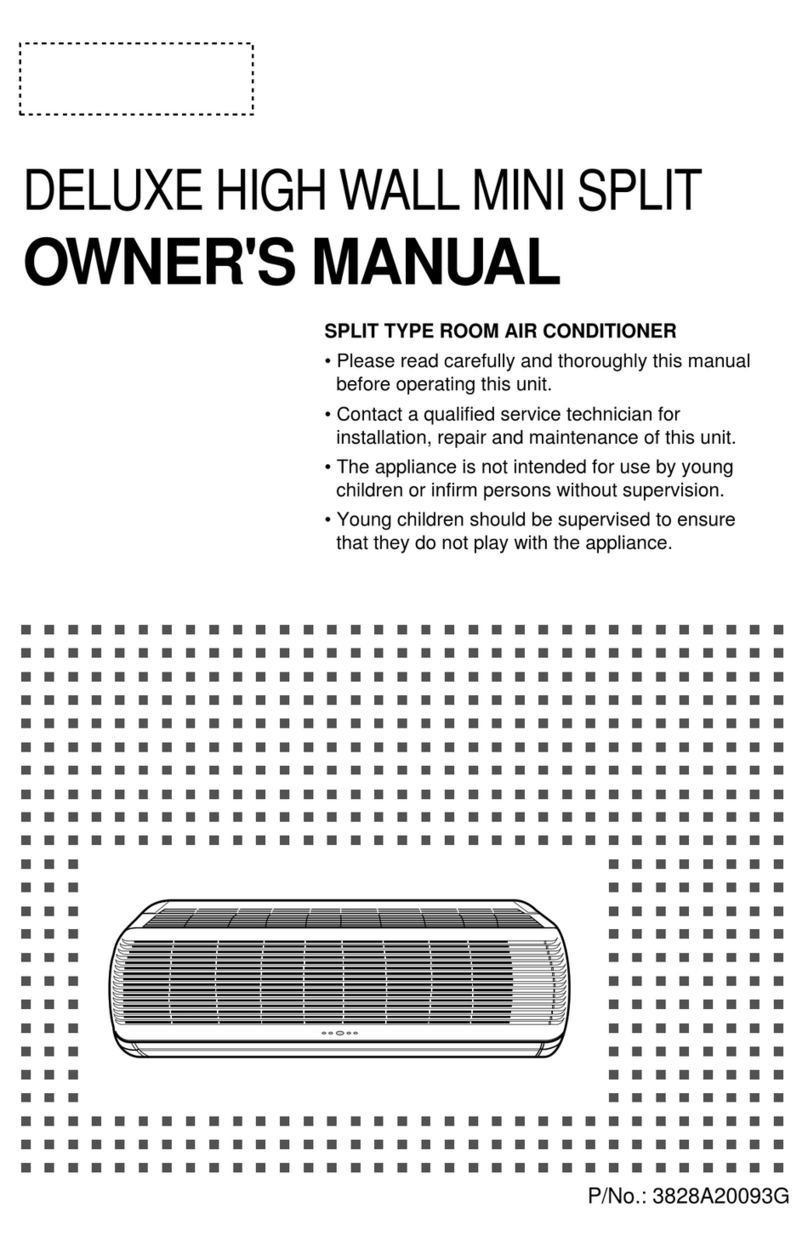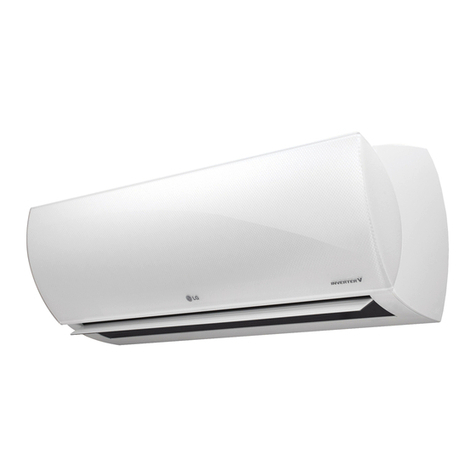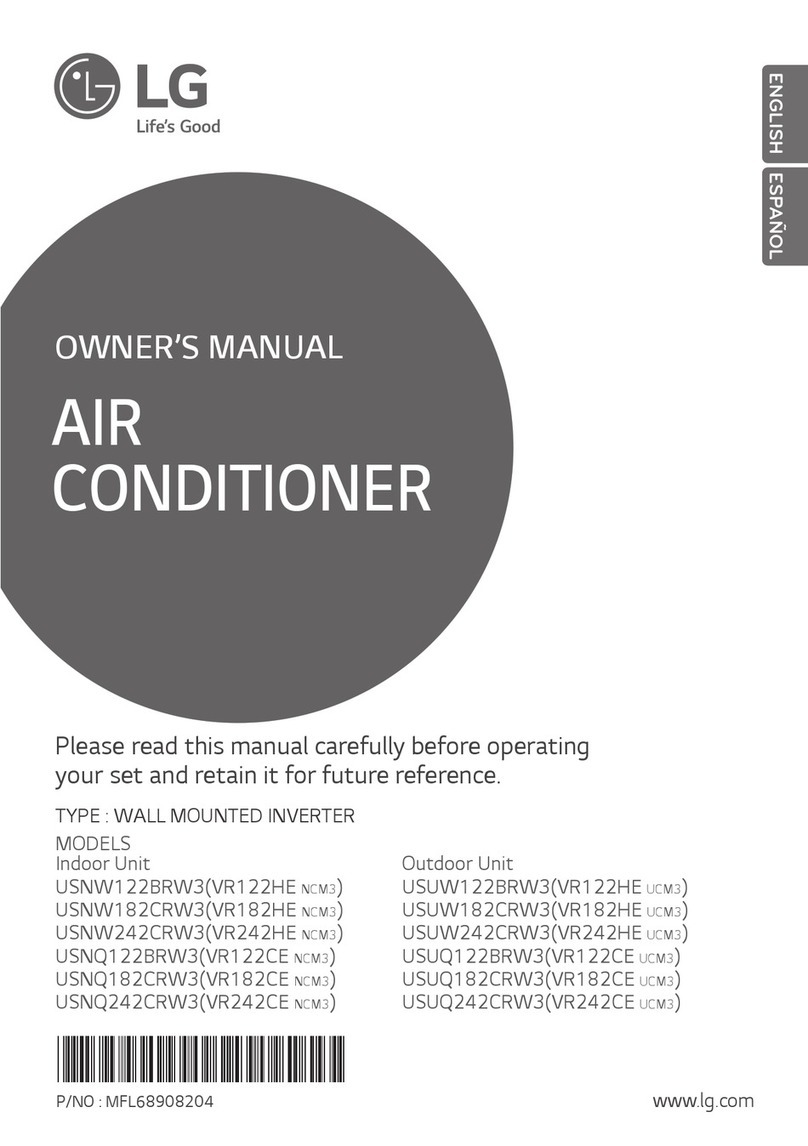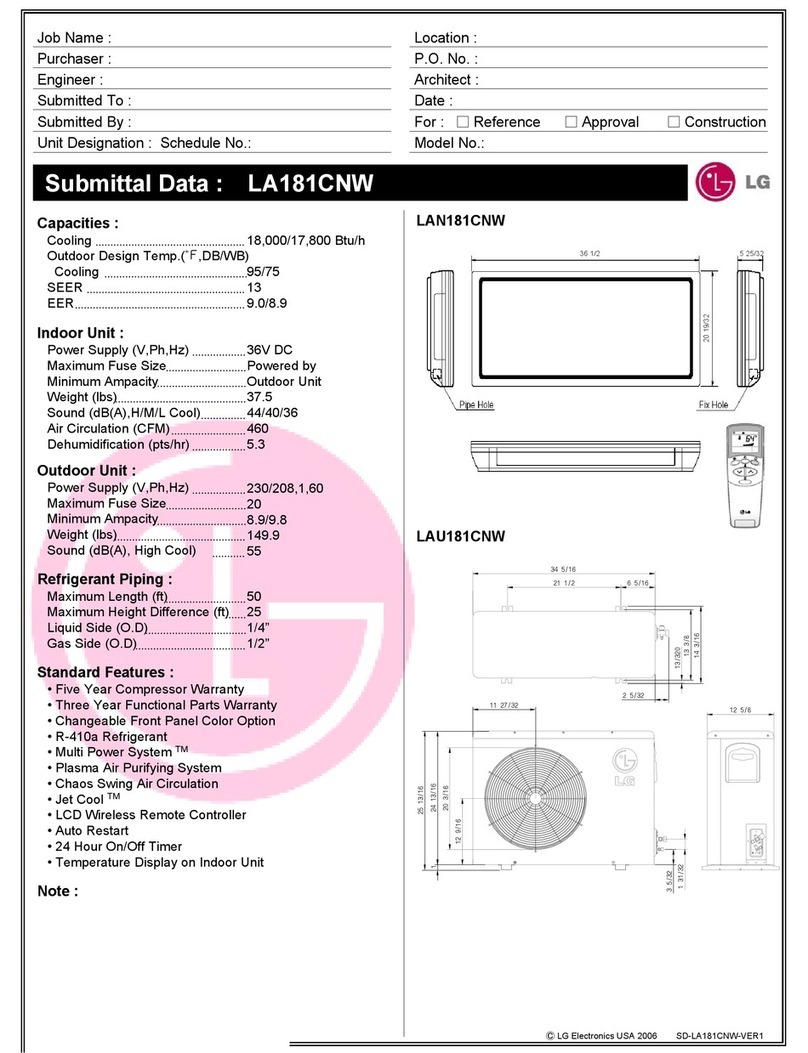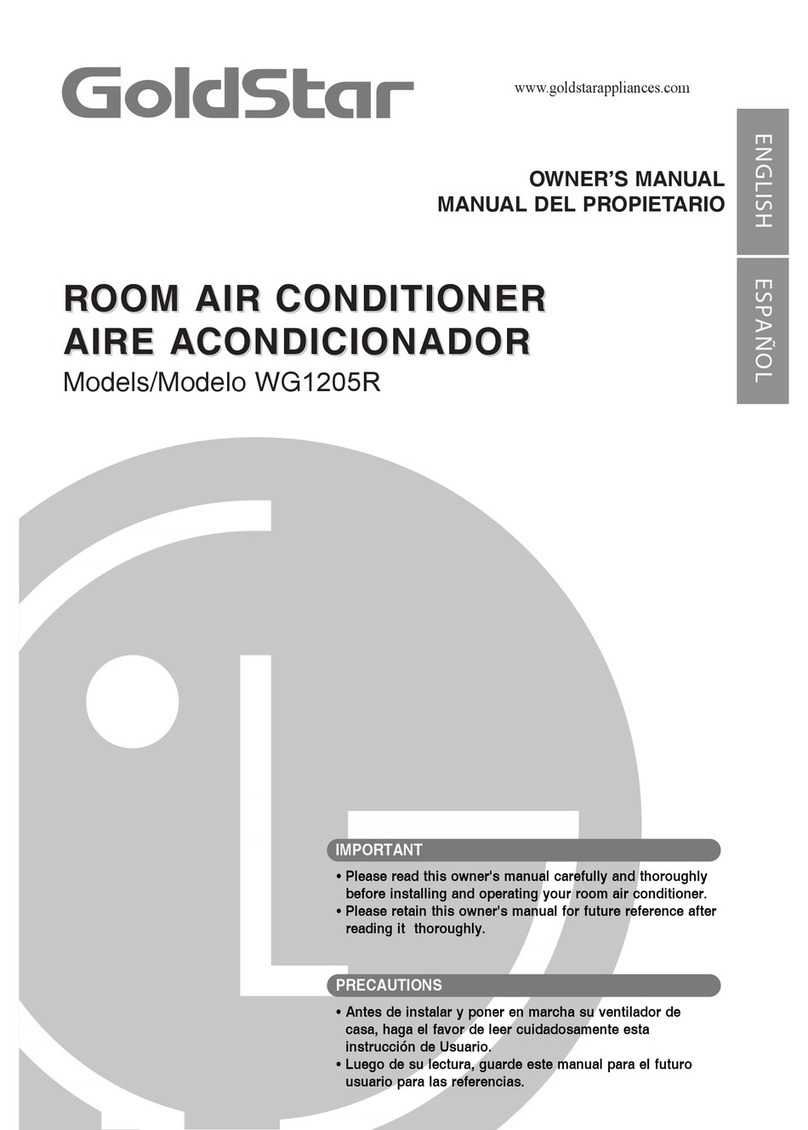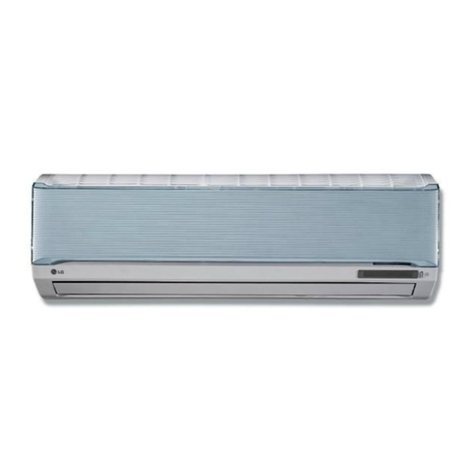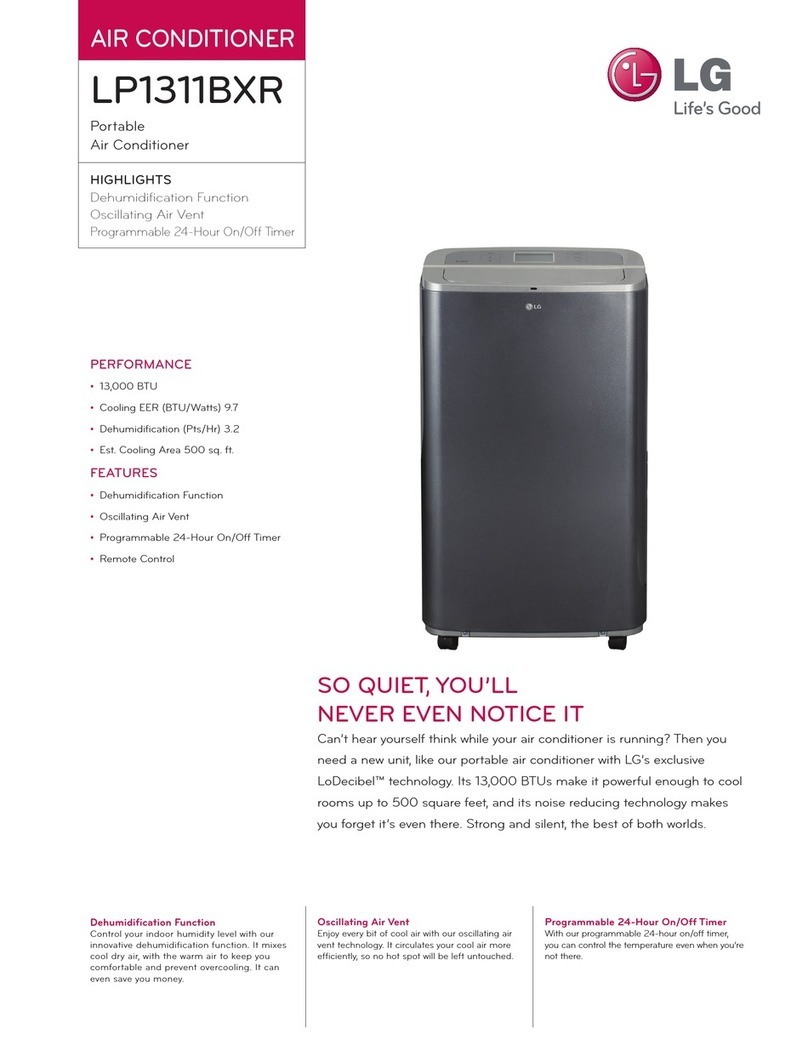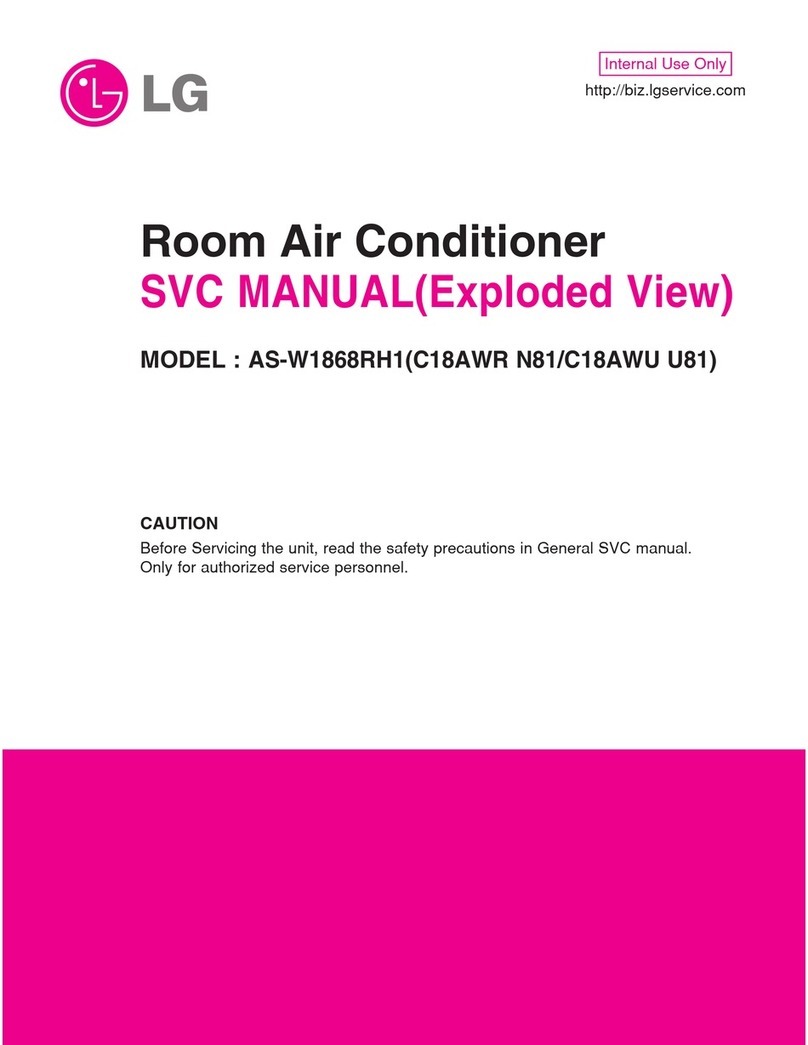4Room Air Conditioner
Safety Precautions
Operation
Do not place the power cord
near a heater.
O D=1I31EC569B51>45<53DB93
C8?3;
Do not allow water to run
into electric parts.
O DG9<<31EC5619<EB5?6=1389>5
?B5<53DB93C8?3;
Use a soft cloth to clean. Do
not use wax, thinner, or a
strong detergent.
O*851@@51B1>35?6D8519B
3?>49D9?>5B=1I45D5B9?B1D5
381>753?<?B?B45F5<?@
CEB61356<1GC
Wax
Thinner
Ventilate the room well when
using this appliance
together with a stove, etc.
O>?HI75>C8?BD175=1I
?33EB
Turn off the power and
breaker firstly when
cleansing the unit.
O)9>35D8561>B?D1D5C1D8978
C@5544EB9>7?@5B1D9?>9D=1I
31EC59>:EBI
Turn off the main power
switch when not using it for
a long time.
O'B5F5>D133945>D1<CD1BDE@1>4
D85@?CC929<9DI?69>:EBI
Unplug the unit if strange
sounds, odors, or smoke
come from it.
O&D85BG9C59D=1I31EC569B5
1>45<53DB93C8?3;133945>D
Do not open the suction
inlet grill of the product
during operation.
O&D85BG9C59D=1I5<53DB931<
C8?3;1>4619<EB5
If water enters the product, turn
off the the power switch of the
main body of appliance. Contact
service center after taking the
power-plug out from the socket.
Do not place heavy object
on the power cord and take
care so that the cord should
not be pressed.
O*85B59C41>75B?669B5?B
5<53DB93C8?3;
Do not share the outlet with
other appliances.
O DG9<<31EC55<53DB93C8?3;?B
69B54E5D?851D75>5B1D9?>
Take the power plug out if
necessary, holding the head
of the plug and do not touch
it with wet hands.
O&D85BG9C59D=1I31EC51
69B5?B5<53DB931<C8?3;
